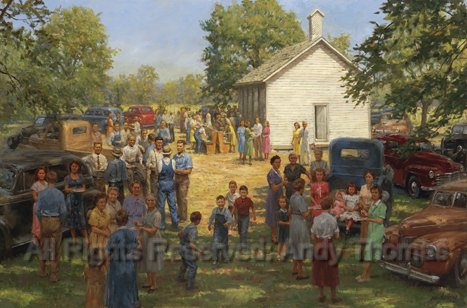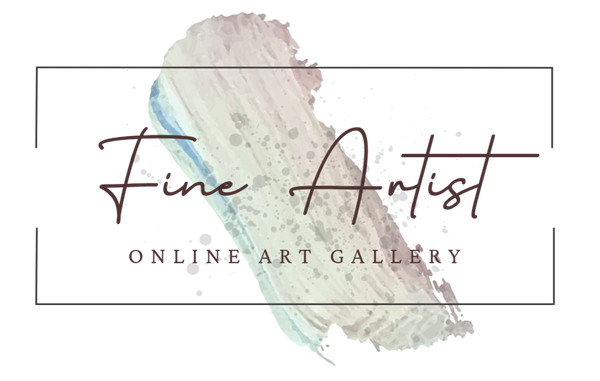
Let's get acquainted with important art terms
Share
The Importance of Art Terminology
Art terminology is important for the collector because it will help you identify what you're investing in, and if it holds investment value. There's a significant difference between an original painting and a reproduction of that same image. Different editions and proofs are worth more than others as well.
Getting acquainted will help you:
- Clarify meaning behind popular terms
- Enhance communication with artists and galleries
- Facilitate informed purchase decisions
Explore essential art terminology for collectors
Are you just starting your journey of investing in fine art, but not sure what to buy, or what all the different terminology means? Then this blog post is for you! We'll cover everything from the most basic questions to the more complex ones. I often get asked what S/N or AP means, or which edition someone should buy. Hopefully this will help you when making your decision.
Why is there so many different editions for 1 size?
Let's use 24x36 size for instance.
- Paper Print Giclee: Limited Edition S/N 500 - 24" X 36"
- Paper Print Giclee: Limited Edition AP 50 - 24" X 36"
- Canvas Giclee: Limited Edition S/N 500 - 24" X 36"
- Canvas Giclee: Limited Edition AP 50 - 24" X 36"
We have 4 different variations above for 1 image in the same size! So confusing, right? Well because we have 2 types of material - paper or canvas, that is already 2 of those choices. Then we have the S/N and AP designations. They're the same exact quality; the only difference is how they're labeled. (More on that below) So why not just have 1 designation? Or no designation? Designation of S/N and AP are important in the fine art world especially when you're buying an investment art piece. Not to get into it too much, since we will below, but think of AP's as test prints. They're the practice prints to get it perfect for the S/N's. Just like a coin with an error is worth more money, AP's can be thought of like that. Today it's more of a traditional thing, as printers have made advancements artists weren't available to before.
Giclée Printing
What does giclee mean?
A Giclee is the printing process used for reproducing a print. Giclee’s are individually produced on a special large format printer from a digital scan of existing artwork, such as the original. They contain bright colors, crisp detail and a high-resolution display.
Origin of Giclee Printing from Wikipedia:
The word giclée was adopted by Jack Duganne around 1990. He was a printmaker working at Nash Editions. He wanted a name for the new type of prints they were producing on a modified Iris printer, a large-format, high-resolution industrial prepress proofing inkjet printer on which the paper receiving the ink is attached to a rotating drum. The printer was adapted for fine-art printing. Duganne wanted a word that would differentiate such prints from regular commercial Iris prints then used as proofs in the commercial printing industry.
Exploring Different Edition Types
Let's start with the different edition types. Some terminology you may see on our site when buying artwork are limited edition, open edition, timeless edition, or grande edition. Limited edition is what everyone assumes, a limited number of pieces available in a particular size and proof (S/N or AP). Once the edition is sold out, it's gone for good. Open editions are literally that - open, meaning there is no end to them. They won't come numbered, or have a proof assigned to them. They're budget friendly and available to people that aren't necessarily big in collecting art yet still enjoy the image. Timeless editions are sort of like open editions, as they never cease to end. The difference is timeless edition prints are larger canvas prints and are also numbered in the order they're produced. They go on eternally though, with no end number. Timeless edition images are also available in the smaller paper and canvas open editions like our other images. You may also see Grande Edition or Special Tribute/Special Grande Tribute Edition which are just limited edition canvas prints that come in much larger sizes from what we usually offer for images, so they have a special name to them. All of our different editions are created on a giclee printer, so the quality and materials are all the same. It's just different labeling for different print sizes. Sometimes when editions sell out and the image is popular, the publisher will release Anniversary editions. Grand Ol' Gang was the first Andy Thomas print to get a 10 year anniversary edition release. The Anniversary edition would be labeled as such on the print, and COA. Sometimes instead of releasing a new designation edition, the publisher will release new sizes. For example, the 18x24 editions for American Storytellers were mostly sold out, so the publisher released a slightly different size of 17x23. Although the 17x23 wasn't part of the original sizes to be released, it will hold similar value compared to those editions.
Limited editions are investment pieces. They also come with a Certificate of Authenticity (COA).
Open editions are budget friendly for those that aren't serious about art collecting.
What Does Signed and Numbered Mean?
S/N stands for Signed and Numbered prints, which means exactly that — they’re signed and they’re numbered. Each reproduction that is S/N is limited in edition. If a print says "S/N 500," it means there are only 500 of that particular edition and size made. Once the 500 sells out, there will be no more. Each S/N reproduction will be marked on the corner of the print and include the artist signature.
- For example: "Canvas Giclee: Limited Edition S/N 500 - 18"x24" could be marked similar to 1/500 with the artist signature underneath. The 1 would change to whatever number you receive in the edition out of the 500 pieces.
Signed and numbered prints are an investment, as they are often costly, although they are cheaper than AP's. They are considerably more cost effective than buying an original piece of artwork. Labeling prints helps differentiate between originals and reproductions.
Understanding Artist Proofs
AP or Artist Proofs go back to the days of handmade presses. The artist would ultimately crank the crank, print the print and check the colors. If they didn’t like the red, they tweaked it. They made these adjustments until the print was to their liking. They were truly proofs. Once the print was to their liking, the S/N's were printed. Today, it is just a tradition, since technology has made huge advancements in the printing industry. AP’s are limited edition and only make up about 10%-15% of the signed and numbered (S/N) edition of that same image and size. Since there are a limited number of AP's to a size, they are considered to be more valuable than their S/N counterpart. If 500 prints are made S/N in a specific size, then only 50 AP prints are made in that same size. They are marked as follows:
- For example: "Canvas Giclee: Limited Edition AP 50 - 18"x24" could be marked similar to 20edition out of the 500 pieces.
Should I buy S/N or AP Prints?
Ultimately, the decision is yours. Some collectors feel as though an AP print is more of an investment piece and will be more valuable in the long run, since not many are made compared to S/N editions. While that could be true, it all depends on the market at the time. Remember the quality is the same on both with the only difference being their labeled designation. AP's also cost more money than S/N prints. So, you also need to consider your budget and status in the art world. If you're a beginner investor in the art world, S/N might sound more appealing to you because of its cheaper cost. On the other hand, if you're a serious collector with a large collection already, then AP might work better for your desires.
Large Format Canvas Giclée's
A Large Format Canvas Giclee is something we offer to those that have large spaces that need to be filled. Ultimately, they are special orders reproduced larger than what is offered on the site. They would be by-quote only depending on the size of the reproduction you would like. Any of the images on the site can be made to order and some can be reproduced up to 50″ high. They are the same quality as our other canvas prints, just one-of-a-kind sizing. We can try to work with a size or space you have in mind or quote you on sizes that would be possible without sacrificing the quality of image. Our goal is reproducing the largest size for you while still maintaining a crisp, high-resolution image. If you are interested in receiving a quote, you can send us an email at fineartistgallery@gmail.com. Please note since these are custom orders, they will be on the pricier side.
Rolled Canvas vs Stretched Canvas
Our paper and canvas prints ship rolled to you in a tube, unless a frame is purchased with your canvas. You can read more on that under framing. We do not offer framing on any paper prints. Rolled canvas is usually the safest option to transport a print to you without damage. Rolled papers are ready for framing when you receive them. When you receive your rolled canvas, you will need to bring it to a local frame shop to have it stretched over wooden rails and then framed. We recommend using Hobby Lobby or Michael's for affordable options. Some of our canvas prints are listed as already stretched. Once those sell out, we will no longer offer that option. It's only available on what we currently have stock on, many titles being sold out editions as well.
Plein Air Framing
Plein Air Framing is a simple unembellished frame, available in 3 color choices: black, gallery bronze, and gold, for our canvas prints. We offer most sizes up to 40". Unfortunately, due to shipping costs, we do not offer framing on our largest canvas prints over 40". Paper prints are also not available for framing as we do not want to risk glass breaking in transit. Framing is only available at the time of the canvas purchase. We do not ship frames individually. All our frames come with an elegant name plaque on the front that will feature the title of the print, along with the artist's name.
Original artwork
Original artwork is the original painting. You can also purchase studies, which are tiny paintings of the original painting. They're sort of like a map for the real piece, and oftentimes the artist will change up that study on the actual canvas. Collectors enjoy these because they're an actual painting that is much cheaper than the original paintings. While there are many different types of mediums, such as acrylic, watercolor, or oil, etc. Andy's medium is mostly oil paint on linen canvas. He has done some watercolor artwork as well, or pen and ink. Today, you won't find Andy attending many shows, as he has mostly retired from auctions. Occasionally you may stumble upon a collector selling their original on an auction site. The first place is directly on the artist website. To view available originals, click here.
